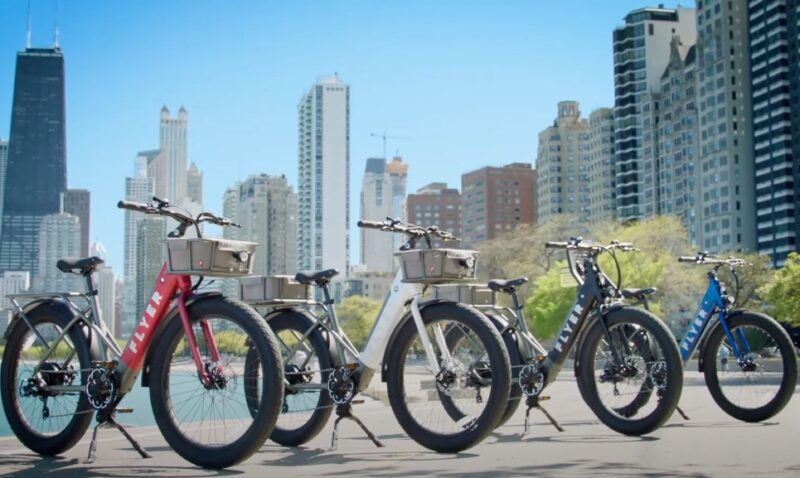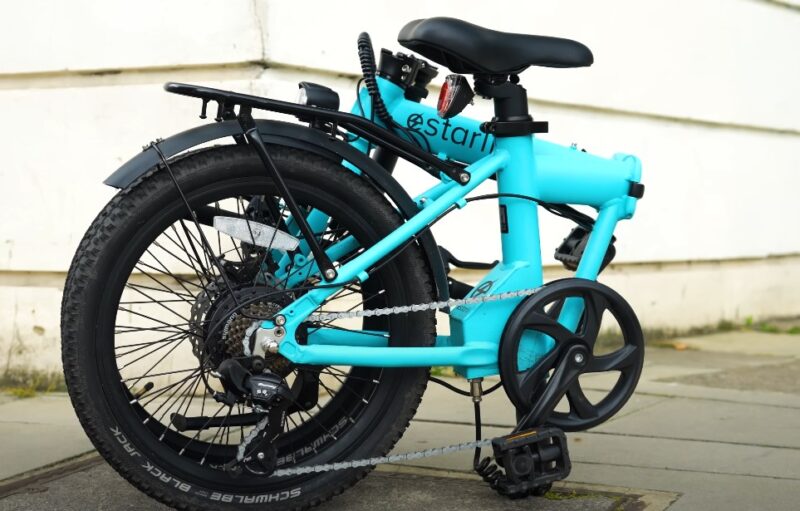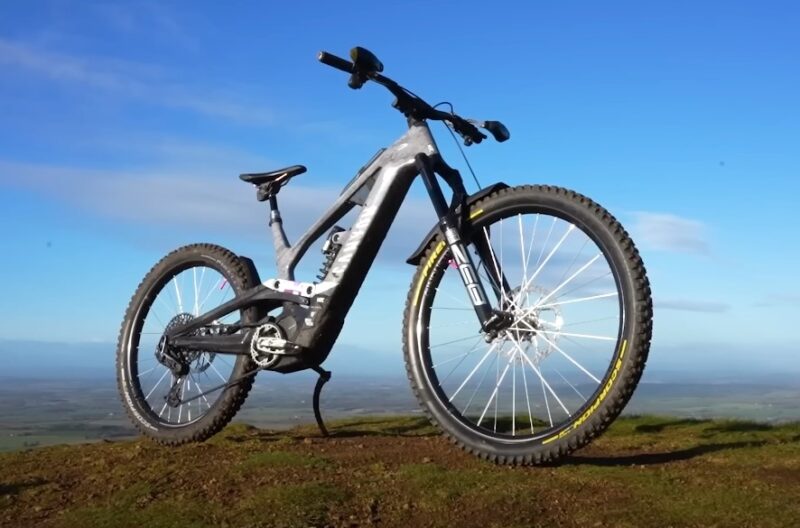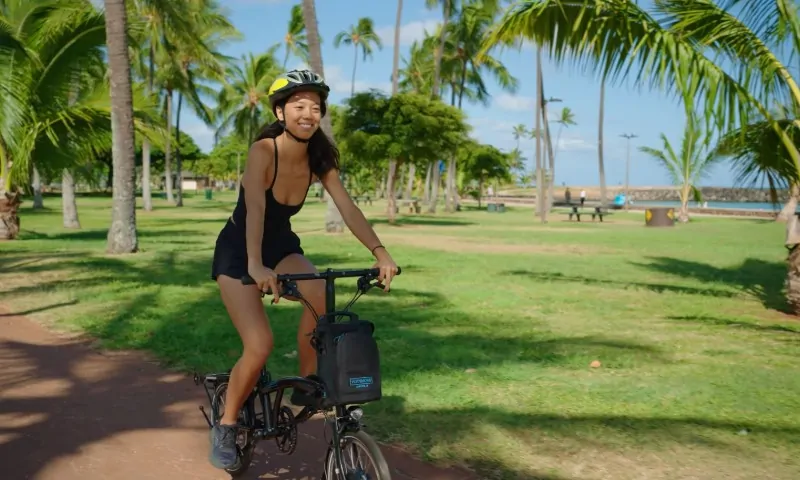When you’re eyeing a new e-bike, one of the most common questions that comes up is: how much does it weigh? You might not think too much about it at first, but trust me, weight plays a big role in how the bike feels, how it performs, and even how easy it is to handle when you’re not riding it.
Electric bikes are heavier than your typical pedal-powered bicycle, mainly because of the extra gear they pack—namely, the motor and battery.
E-bike average weight falls anywhere between 30 and 80 pounds (14 to 36 kg), which is a pretty wide range.
Why so much variation? Well, it really depends on the type of e-bike you’re talking about, along with things like the materials used for the frame, the battery capacity, and the size of the motor.
Let’s break down what you can expect when it comes to the weight of e-bikes and how that weight can vary depending on the type of bike you choose. Here’s a quick look:
| E-Bike Type | Weight Range |
|---|---|
| Lightweight E-Bikes | 30–40 lbs (14–18 kg) |
| Standard/Commuter E-Bikes | 45–65 lbs (20–29 kg) |
| Heavy E-Bikes (eMTB, Cargo) | 65–80 lbs (29–36 kg) |
| Folding E-Bikes | 30–50 lbs (14–23 kg) |
| Performance E-Bikes | 35–50 lbs (16–23 kg) |
Table of Contents
ToggleAverage Weight of E-Bikes

Lightweight E-Bikes
These hover around the 30 to 40-pound mark (14 to 18 kg). They’re designed with portability in mind, making them a good choice for city riders who need something easy to lug up a few flights of stairs or onto public transport.
Materials like aluminum or carbon fiber are often used to keep the weight down.
Standard E-Bikes
Most commuter or hybrid models fall into this category, weighing around 45 to 65 pounds (20 to 29 kg).
They’re built to strike a balance between comfort, performance, and battery life, but they’re not quite as nimble as their lighter counterparts. I should also mention that these are my favorites.
Heavier E-Bikes
If you’re thinking of an electric mountain bike or cargo e-bike, prepare for something on the heavier side—usually between 65 and 80 pounds (29 to 36 kg).
These bikes are built tough, with bigger motors and batteries to help you power through long rides or haul some serious cargo.
Factors That Affect E-Bike Weight

You’re probably wondering: what exactly makes one e-bike heavier than another? A few key factors come into play.
1. Battery Size and Capacity
The battery is one of the heaviest components on an e-bike. The larger the battery, the more range you’ll get, but that comes with added weight.
Most batteries weigh anywhere from 5 to 15 pounds (2.2 to 6.8 kg). So, if you’re someone who loves long rides without worrying about running out of juice, you might have to compromise with a slightly heavier bike.
2. Motor Power and Size
The motor adds another chunk of weight to the equation. E-bike motors usually range from 250 watts to 750 watts, and higher power levels tend to mean more weight.
Expect the motor itself to weigh around 5 to 10 pounds (2.2 to 4.5 kg). While a more powerful motor can give you an extra boost, it’ll also make your bike a bit bulkier.
3. Frame Material
The type of material used for the bike’s frame plays a huge role in its weight. Lighter materials like aluminum or carbon fiber will keep the bike’s weight down, while heavier materials like steel or reinforced aluminum add durability at the cost of added heft.
- Aluminum: The most common choice for e-bike frames, thanks to its strength-to-weight ratio.
- Steel: Adds sturdiness but can pack on some serious pounds.
- Carbon fiber: Lightweight and strong but often more expensive.
4. Added Features and Accessories
The more bells and whistles you add to your e-bike, the more weight you’ll be dealing with. For example, suspension systems, racks, fenders, and integrated lights all contribute to the bike’s overall bulk.
A full-suspension electric mountain bike, for example, will weigh significantly more than a standard commuter e-bike because of the additional components that help absorb the impact when riding over rough terrain.
E-Bike Weight by Type

Different types of e-bikes come with their own weight ranges, largely due to their intended use and the specific components they require.
Electric Mountain Bikes (eMTBs)
eMTBs are built to handle tough, off-road conditions, so it’s no surprise they’re on the heavier side.
Typically weighing between 50 to 80 pounds (22 to 36 kg), these bikes come with larger motors and batteries to help power through steep climbs and rough trails.
Commuter and City E-Bikes
Designed for city riding, commuter e-bikes usually fall in the 40 to 60-pound range (18 to 27 kg). They prioritize practicality over raw power, often coming with features like quick-release wheels or folding frames that make them easier to transport.
If you need something you can easily store in an apartment or bring on public transport, commuter bikes offer a nice balance between weight and functionality.
Folding E-Bikes

Portability is the name of the game here. Folding e-bikes are generally lighter, weighing in between 30 and 50 pounds (14 to 23 kg).
They’re ideal for urban commuters who don’t have a lot of space to store a full-sized bike, but keep in mind that the lighter weight may mean a smaller battery or less powerful motor.
Cargo E-Bikes
Cargo e-bikes are designed to carry heavy loads, so naturally, they weigh a lot. You’re looking at anywhere from 60 to 80 pounds (27 to 36 kg) or more.
With larger frames and robust motors, they’re perfect for carrying groceries, kids, or even running a small delivery business. However, they’re not exactly the easiest bikes to move around when you’re off the saddle.
Performance E-Bikes
Performance-oriented e-bikes, like those used for racing or long-distance touring, are usually on the lighter side, weighing between 35 and 50 pounds (16 to 23 kg).
They often use carbon fiber frames and high-efficiency motors to keep the weight low while maximizing speed and range.
How Weight Impacts E-Bike Performance
Portability
When it comes to portability, weight is a big deal. If you live in an apartment building with no elevator or need to lift your bike onto a rack, lighter models are definitely easier to manage.
Folding e-bikes and commuter bikes are the champions of portability here, making them a solid choice for city riders who need something easy to carry or store.
Range and Speed
Heavier e-bikes tend to come with more powerful motors and larger batteries, which might sound great for range and speed. However, the added weight also means more energy is required to move the bike.
That can lower the efficiency of the battery, potentially reducing how far you can go on a single charge.
Handling
There’s a trade-off between weight and handling. A heavier e-bike can feel more stable, especially at higher speeds or on bumpy terrain.
However, it can also feel sluggish when you’re trying to accelerate or make quick turns. Lighter e-bikes are more agile, making them a joy to ride in tight spaces or for weaving through city traffic.
Final Thoughts
E-bike weight matters, and it’s something you’ll want to consider before making your purchase. From the lightweight folding e-bikes that prioritize portability to the hefty cargo e-bikes built for hauling serious loads, there’s an e-bike out there for every type of rider.
Think about what kind of riding you’ll be doing most often. If you need something light and easy to carry, commuter or folding e-bikes are the way to go.
On the flip side, if you’re planning to tackle rugged trails or need extra cargo space, you’ll probably want to opt for a heavier, more powerful model.
Related Posts:
- 9 Things Every Cyclist Should Know About FTP…
- How Much Does the Average Dirt Bike Weigh? - A…
- 9 Fastest Electric Scooters You Can Actually Buy
- Nutrition for Cyclists - What to Eat Before, During…
- How Much Does a Yamaha Dirt Bike Cost? Top Models and Prices
- Do Dirt Bike Tires Have Tubes? - What You Need to Know








